
After a jam-packed schedule of performances by popular artists—including the Steve Miller Band, Robert Plant and Alison Krauss, Elvis Costello and the Imposters, and the perennially sold-out James Taylor shows on the third and fourth of July, the Boston Symphony Orchestra arrived at Tanglewood, the sylvan music paradise of the Berkshires, for a gangbuster opening weekend. The vast variety of concerts ranging across all music genres made for a choose-your-own-adventure weekend, and I chose to sample a gamut of music starting with the classical cannon and ending with of-the-moment contemporary.
Conductor Andris Nelsons kicked off opening night—Friday, July 7—with a heartfelt welcome to the audience in the Koussevitzky Shed (and the lawn beyond). Noting how fast the year has gone by, and how gratifying it is to return to Tanglewood, Nelsons got a bit emotional about returning to the BSO’s summer home, particularly in the post-pandemic world, calling it “such an amazing place, almost like paradise”
“We have to value every moment, enjoy each other, enjoy the music, enjoy our friends and family… Our welcome to you is coming from the bottom of our hearts… Music can make things better…Music comforts… Music can be food for our souls,” said Nelsons, before turning to conduct the evening’s musical program, beginning with Wynton Marsalis’s Herald, Holler, and Hallelujah.
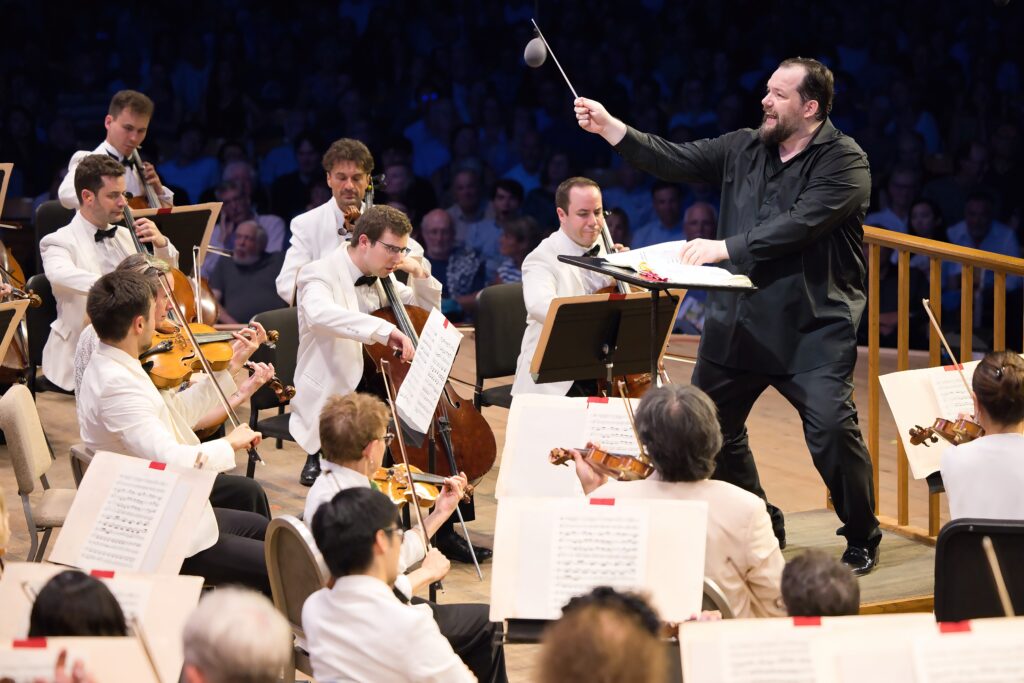
This composition for brass and percussion had its debut performance in early 2022 by the New Jersey Symphony. The beginning brought to mind Copland’s classic Fanfare for the Common Man; when the percussion joined the heraldic horns, the music turned increasingly jazzy until the vivid, swinging end. Rather than describe this piece, I’ll share a snippet of the poetic program notes by the esteemed composer:
Bellicose brass blares and blasts with a sugarfoot swagger
blows down burnished walls
gathers the congregation with the grandiosity and gravitas of gold
and silver fanfares as processions of the elect bedecked-in-fnery
sashay back and forth in shining significance to commemorate
The celestial progression:
from occasional
to ceremonial
to the transcendent triumph of timeless tradition.
That’s what Brass always brings.

After that six-minute start to the evening, the orchestra seats filled up with the strings and woodwinds to take on Prokofiev’s Piano Concerto No. 3 in C, Opus 26. The crowd roared as the soloist—guest artist Daniil Trifonov—entered the stage, and hushed as he sat at the piano. Trifonov was magnetic, his fingers flying up and down the piano keys, sometimes gently and sometimes hammering the keyboard, sometimes playing at four times the beat of the orchestra.
A tall man, Trifonov hunched over the piano, his long dark hair falling over his face. Throwing his entire body into this demanding concerto, he occasionally bolted upright, throwing back his head and his mane. He played spectacularly, which is only to be expected, and the concerto ended to thunderous applause, which brought Trifonov back to the stage for a solo performance of a brief encore: Prokofiev’s “Gavotte” from Cinderella, Opus 95.
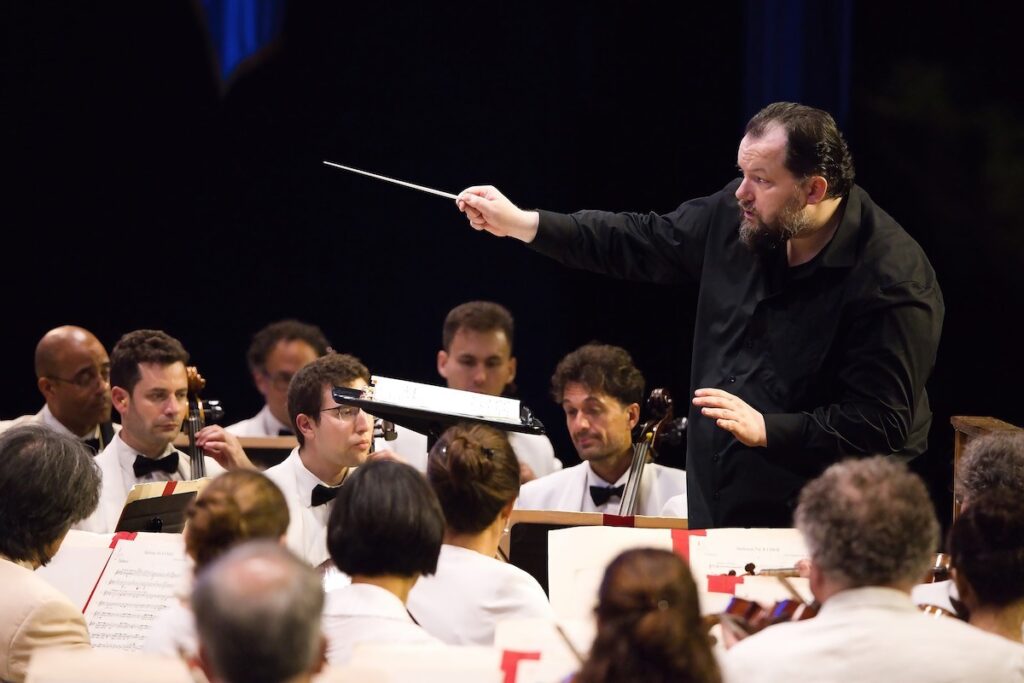
The evening ended with Tchaikovsky’s Symphony No.4 in F, Opus 36, which starts with high drama, and has a fascinating section in the middle that’s like a call-and-response between the string instruments—being plucked (pizzicato)—and what sounded to me like the piccolos. Per convention, the music builds in intensity toward the end, with more percussionists (crashing cymbals, tingling triangle, booming kettle drums) joining in for the climactic finale.

Saturday night brought the long-delayed premiere of Ragtime: The Symphonic Concert to the Shed. This production—a new concert version of the Tony Award-winning musical from 1998, based on the epic 1975 novel by E.L. Doctorow—was commissioned by the BSO and scheduled to debut in 2020 to honor conductor Keith Lockhart’s 25th anniversary at the Boston Pops podium. But then COVID hit and the debut was delayed until this weekend. Between then and now, famed playwright Terrence McNally, who wrote the book, died from complications related to COVID.
Ragtime tells the story of a changing America in the early 20th century through the intersection of three social groups represented by a wealthy white family living in New Rochelle; Sarah (Nikki Renée Daniels) and Coalhouse Walker, Jr. (Alton Fitzgerald White), a Black couple from Harlem who have had a baby out of wedlock and plan to marry; and a fresh-off-the-boat Eastern European immigrant Tateh (John Cariani) and his daughter (The Little Girl, played by Julia Little). The wife (Mother—the white wealthy family members have no character names) is the locus as the story weaves these disparate characters together.
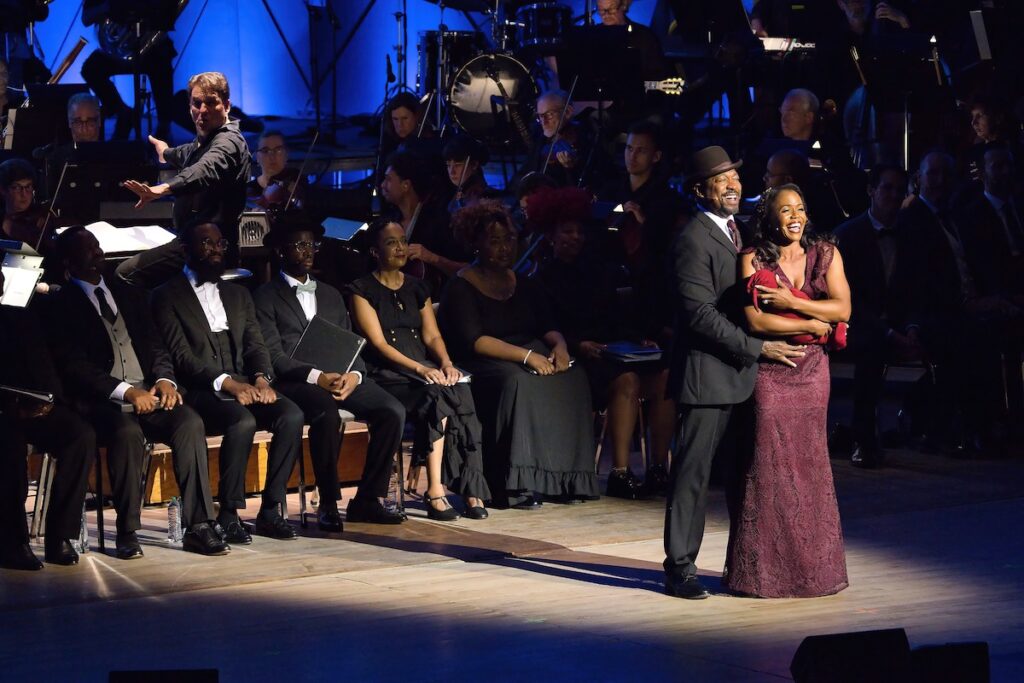
Mother meets Tateh on a train platform as she bids farewell to Father (he’s heading off on an Arctic expedition with Robert Peary) and he searches for a better life in America beyond the Lower East Side. Mother finds a Black infant in her garden, and the police identify Sarah, who works in a house nearby, as the mother. Rather than let Sarah go to prison and the baby go to an orphanage, Mother takes them into her home. And Mother (Elizabeth Stanley, in fine voice) finds herself transformed, awakened into a more open-minded woman who recognizes that she can make choices for herself, and in so doing embodies the melting pot ideal of America.

In Ragtime, we encounter a slew of turn-of-the-century Americans during the Industrial Revolution. We meet J.P. Morgan and Emma Goldman, Harry Houdini and Booker T. Washington. Henry Ford gets a song about inventing the assembly line. And we meet chorus girl Evelyn Nesbit—married to Harry Thaw (son of a railroad tycoon) who killed her lover, the socialite architect Stanford White. This “it Girl,” delightfully played by Sophie Mings (whom I recognized from last summer’s A Little Night Music at Barrington Stage Company), gets a very Chicago song—“The Crime of the Century”—and nearly steals the show. “Wheeee!”
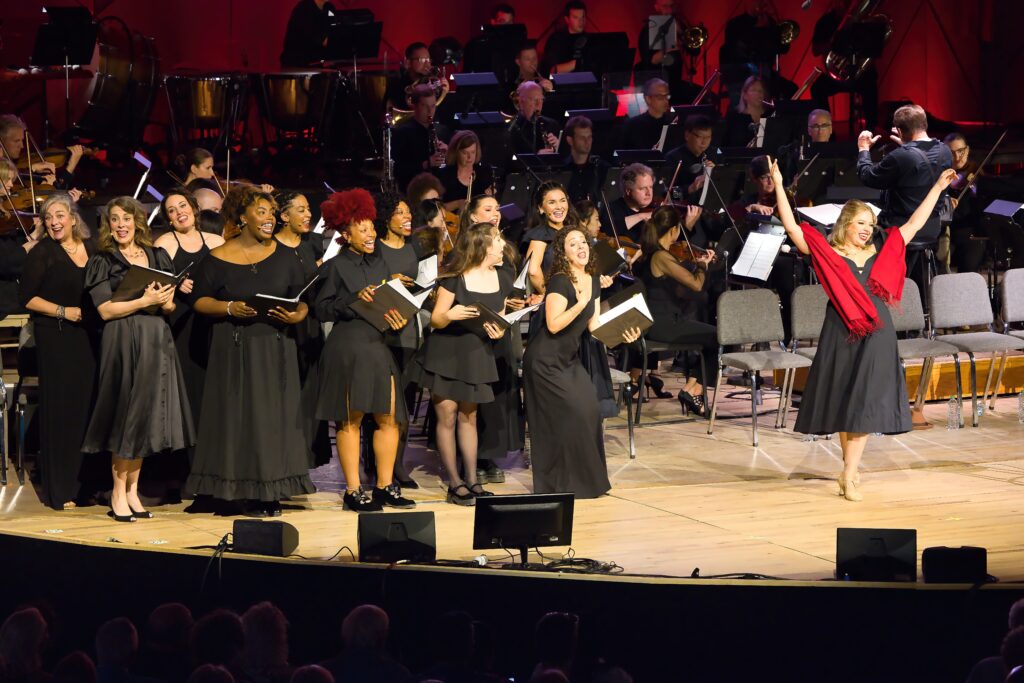
The production has striking current-day relevance, touching on social unrest, white supremacy, income inequality, the quest for justice, antipathy toward immigrants, women’s rights, and police brutality toward unarmed Black people. It also has some excellent songs done with imaginative minimal staging, such as “What a Game,” with Father (David Harris) taking his son (The Little Boy, played by Quinn Murphy) to a baseball game in New York City, with the rowdy crowd cursing, spitting, and threatening to erupt into violence could erupt at any moment, or the heartbreaking “Sara Brown Eyes,” in which Coalhouse dances tenderly with Sarah, who materializes from the grave only to vanish.

Some of the lyrics startle: the opening number “Ragtime,” setting the scene, gets right to the point describing New Rochelle: “There were gazebos, and there were no Negroes.” That line was an eye-opener. And A.J. Shively, as Mother’s Younger Brother, having been radicalized during a labor union meeting led by Emma Goldman (Klea Blackhurst), reveals his unspoken empathy for the plight of Coalhouse and the futile pursuit of justice in “He Wanted to Say.”
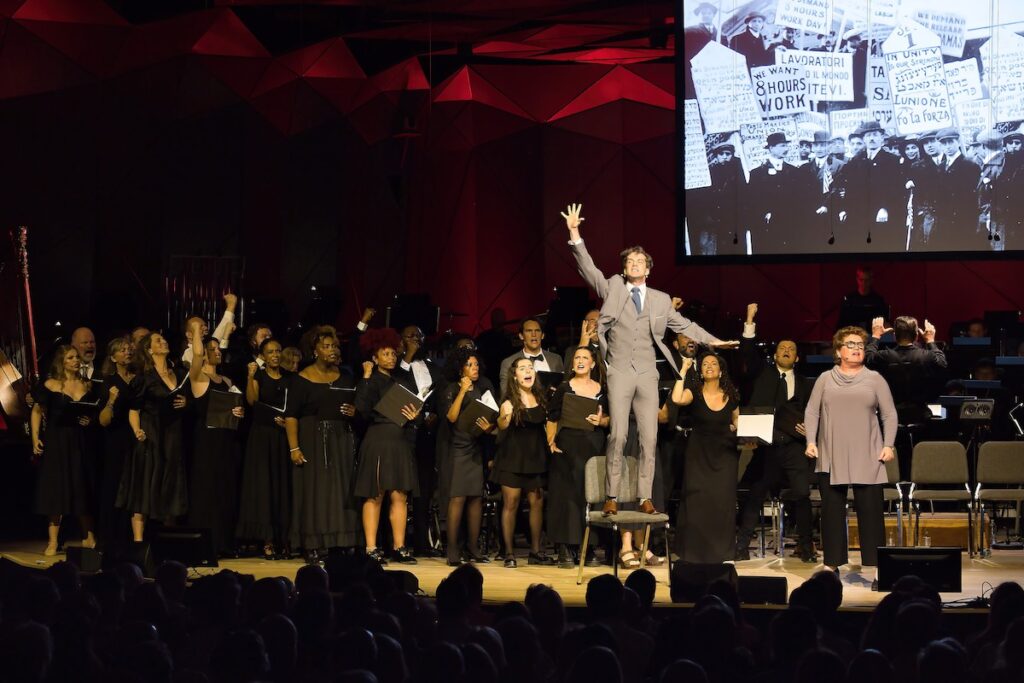
While the singing and acting took center stage (and I’d be remiss not to mention that Nikki Renée Daniels and Alton Fitzgerald White nearly bring down the house with each of their songs, and Elizabeth Stanley can really belt it out there!), Lockhart and the Boston Pops did an exceptional job with the score. If you’ve seen The Sting, you’ll find many tunes bring that classic film to mind. Also adding to the show’s allure: the screen projections—mostly archival photos and footage, sometimes subtly colorized. After the cast and orchestra took their well deserved bows, lyricist Lynn Ahrens, composer Stephen Flaherty, and stage director Jason Danieley joined them onstage, highlighting the absence of McNally, their partner in this ambitious project.
Which brings us to Sunday, July 9, on the far edge of the Tanglewood campus, at the relatively new Linde Center for Music and Learning, where Pamela Z presented an evening of stunning, innovative works for voice, electronics, and video. Alone on stage, with two laptops and an array of mysterious, fragile-looking devices, plus a screen behind her with projections of her own making, Pamela Z was a magician musician; she conjured bits of music, bits of conversations, yips, yelps, water noises, and other sounds, and added to them with her own vocalizations, then altered, looped, and layered them with a wave of her hand.

In addition to her electronic wizardry, Pamela Z’s wry wit was on display in pieces like “Typewriter,” in which she reads a letter apologizing for her tardy correspondence, explaining that her laptop is broken so she is using her typewriter, set to the distinct clackety sound of that outmoded means of communication, with video of old-timey typewriter keys rolling across the screen. “Unknown Person” begins with recordings of people discussing what they pack when traveling, then morphs into repetitive phrases from standard TSA questions (“Did you pack your own bags?”) with X-ray images of a suitcase holding contraband that gets more and more absurd (a Swiss Army knife, human organs, a snake, a live frog). In “Pop Titles ‘You,'” she recites and loops a stream of phrases that begin with the word “you,” at times loving, at times hurtful (“You take my breath away,” “You talk too much.”) with the backdrop of a slowly floating image that gradually reveals itself to be a page of a 1986 Phonolog Report with song titles beginning with the word “You.”

In one piece, she sits at the desk in front of her laptop, and the camera captures close-up video of her vocalizations and exaggerated movements and expressions, which she then mixes live on the screen. In other works, she straps glowing red devices to the back of her hands; I’m not exactly sure which devices did what, but she could speed sounds up, slow them down, start and stop recordings, and layer sounds just by waving her hands. When she sings, which she does in fits and starts, she reveals a remarkable, operatic, and versatile voice.

With little exposure to this innovative multimedia artist, Pamela Z’s performance made me think of her work as a next-generation cross between Laurie Anderson and Meredith Monk. This impression seems appropriate given that her final piece was her take on Monk’s “Scared Song,” which, she explained, she had to painstakingly recreate for live performance from the studio version she had made for the 2012 tribute recording, Monk Mix. It was an enchanting evening of innovative, sometimes funny, sometimes moving music and visuals. And it was a perfect finale to a Tanglewood weekend that traveled across time and tradition, from Andris Nelsons’s classical program, to a turn-of-the-century drama, to Pamela Z’s of-the-moment experimental creations.
Photos are courtesy of Tanglewood


Be the first to comment